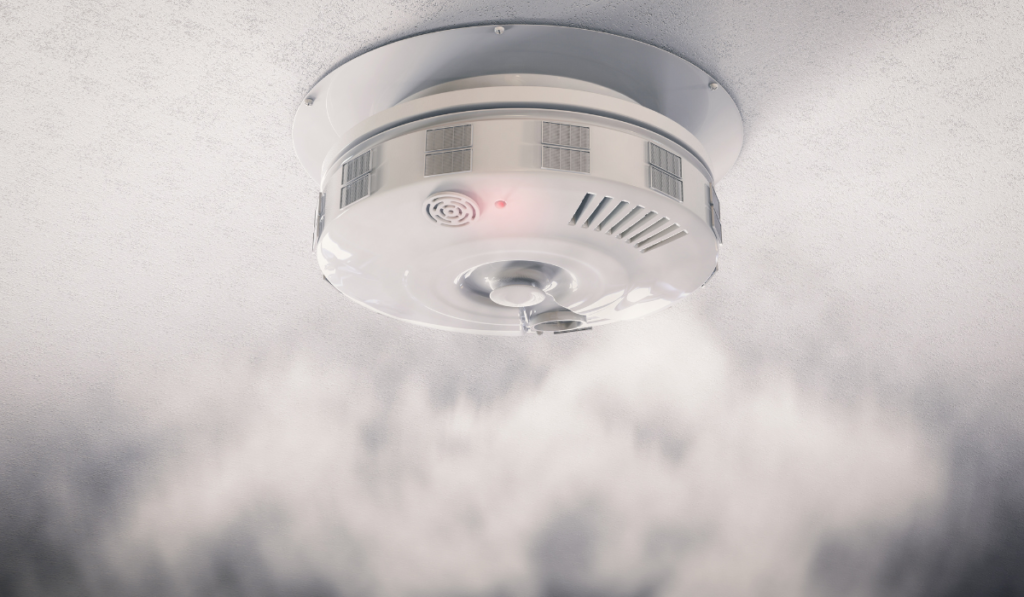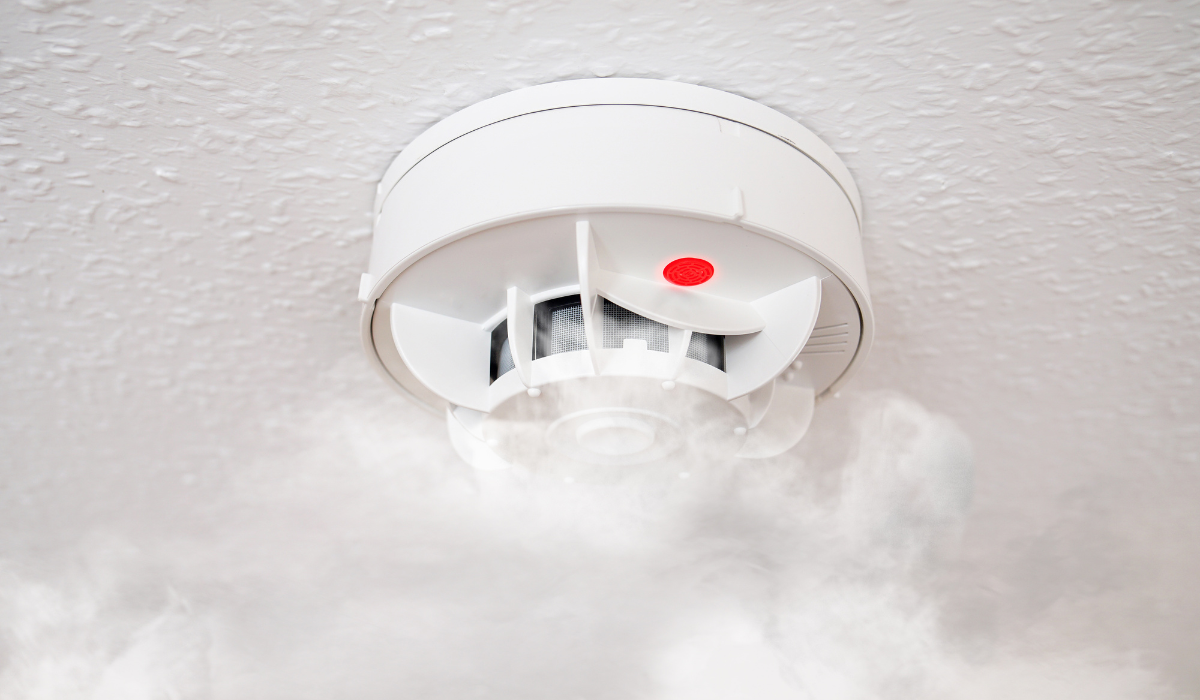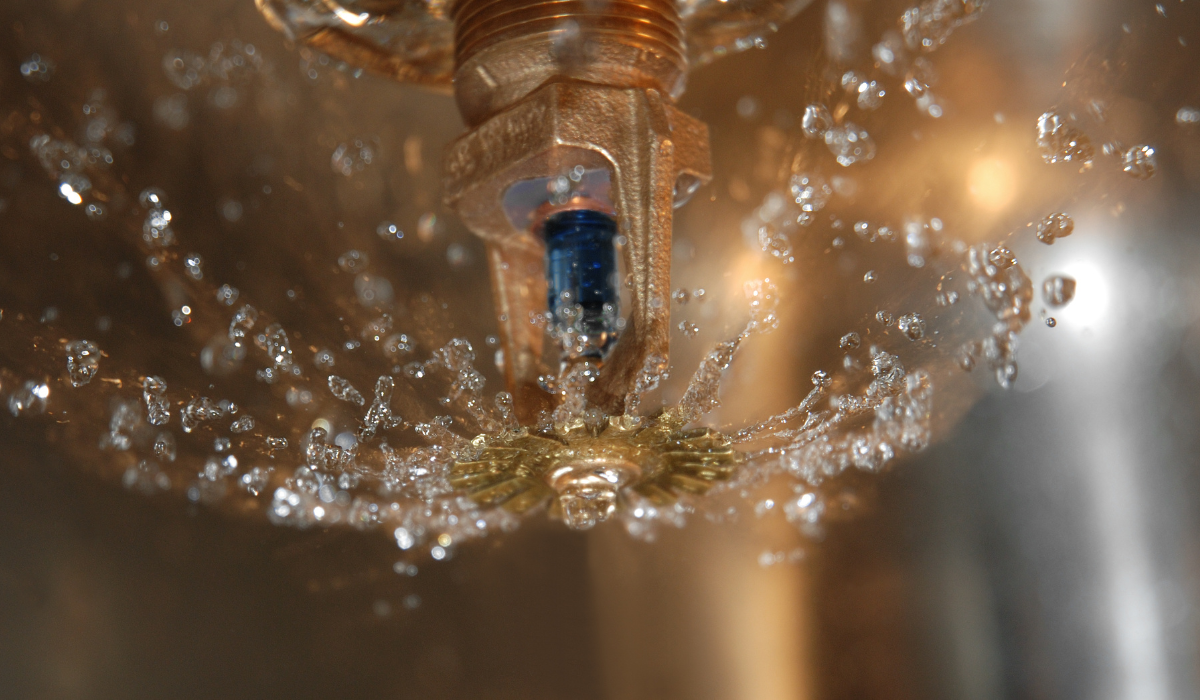Fire sprinklers do not detect smoke; they activate in response to heat. Smoke detectors, not sprinklers, are designed to sense smoke and trigger alarms.
Fire sprinklers are essential components in modern safety protocols, serving to extinguish or control the spread of fire in buildings. Unlike smoke detectors, which alert occupants to the presence of smoke through alarms, fire sprinklers are heat-activated devices that deploy water when a predetermined temperature is exceeded, typically indicating the presence of a fire.
Their response is automatic, immediate, and localized, targeting the area where high temperatures are detected. The presence of fire sprinklers can significantly reduce property damage and loss of life by containing or even extinguishing fires before emergency services arrive. Understanding the distinct roles of fire sprinklers and smoke detectors is crucial for effective fire safety strategies in residential and commercial properties.
The Function Of Fire Sprinklers

Imagine fire sprinklers as silent guardians. They watch over our homes and workplaces. Their main job is to sprinkle water when a fire breaks out. They do not look for smoke. Instead, they sense the heat from a fire. This heat tells them to spring into action. They spray water to stop the fire from spreading. Let’s delve into how they know it’s time to work.
Activation Mechanics: Heat Vs. Smoke
Many people think that fire sprinklers detect smoke. That’s not true. Smoke detectors beep when they sense smoke. Fire sprinklers need heat to work. They have a special part inside them. This part is sensitive to heat. When it gets hot, the sprinkler turns on. This stops the fire from getting bigger.
- Smoke detectors alarm people.
- Fire sprinklers put out fires.
Types And Designs Of Sprinkler Systems
There are many kinds of fire sprinklers. Each type has its own design. They fit different places and needs. Here are some:
| Type | Where It’s Used | Special Feature |
|---|---|---|
| Wet Pipe | Homes, Schools | Always filled with water |
| Dry Pipe | Freezing Places | Water comes in when needed |
| Deluge | High Hazard Areas | Floods the area with water |
| Pre-Action | Places with Valuables | Needs heat and smoke to activate |
Each system is special. It’s chosen based on the location’s need. A school would use a wet pipe system. But a cold storage facility would need a dry pipe system.
Common Misconceptions About Sprinklers

Fire sprinklers are vital for safety in many buildings. People often believe that sprinklers respond to smoke, but this isn’t true. This section clears up confusion and sheds light on how sprinklers really work.
Smoke Detection Capabilities
Sprinklers don’t detect smoke. Smoke detectors serve that purpose. Sprinklers activate through heat sensing technology.
Myths Vs. Facts: What Triggers A Sprinkler
| Myth | Fact |
|---|---|
| Smoke sets off sprinklers. | Sprinklers trigger by high temperatures, typically above 155°F. |
| Every sprinkler activates in a fire. | Only the sprinkler closest to the fire usually goes off. |
| Water damage from a sprinkler is worse than a fire. | Sprinklers can minimize fire damage by controlling the blaze early. |
- Smoke alone can’t activate a fire sprinkler.
- Multiple sprinklers don’t often go off at once.
- Sprinklers aim to control fire and reduce damage.
Smoke Detectors Vs. Fire Sprinklers
Understanding fire safety is crucial for keeping homes and buildings safe. Two essential components in this safety system are smoke detectors and fire sprinklers. While they both help in protecting us from fires, they serve different purposes.
Distinct Roles In Fire Safety
Smoke detectors and fire sprinklers have unique functions:
- Smoke detectors alert occupants to the presence of smoke.
- Fire sprinklers activate to extinguish a fire once it detects heat.
Fire sprinklers do not detect smoke. They respond to high temperatures.
Integrating Systems For Enhanced Protection
For the best fire protection, smoke detectors and fire sprinklers should work together. This integration creates a dual layer of safety:
| System | Function | Response Time |
|---|---|---|
| Smoke Detectors | Detects smoke quickly | Immediate |
| Fire Sprinklers | Extinguishes fire | Upon heat detection |
Linking these systems ensures early warning and rapid response.
How Fire Sprinklers Save Lives
Fire sprinklers do not simply blend into ceilings; they stand as vigilant protectors of both life and property. Contrary to common belief, fire sprinklers are not triggered by smoke. Instead, they spring into action in the presence of extreme heat from flames, making them an essential component in safeguarding lives during a fire. Understanding how fire sprinklers save lives reveals the remarkable efficiency of these unsung heroes in fire emergencies.
Immediate Action During Fires
When seconds count, fire sprinklers waste no time. They respond to fires swiftly, often before emergency services can arrive. This immediate action provides critical advantages:
- Suppresses the fire quickly, reducing heat and flames.
- Allows people more time to evacuate safely.
- Minimizes the risk of deadly smoke inhalation.
The Impact On Fire Damage Control
The presence of fire sprinklers significantly reduces the damage caused by fire. By tackling the blaze early, sprinklers limit fire spread which aids in:
| Aspect | Impact |
|---|---|
| Property Loss | Decreases potential destruction to structure and personal belongings. |
| Fire-related Injuries | Lowers incidence of burns and smoke-related injuries. |
| Economic Costs | Reduces the overall expenses associated with fire damage. |
The Engineering Behind Fire Sprinklers
Fire sprinkler systems are crucial for safety in buildings large and small. Unlike smoke detectors that alert occupants to the presence of smoke, fire sprinklers activate to control or extinguish a fire. Understanding the engineering that goes into these systems reveals how they provide effective protection against the devastating impact of fires.
Heat Sensitivity And Response Time
Heat sensitivity is the backbone of fire sprinkler operations. Sprinklers contain a heat-sensitive component, such as a glass bulb filled with a glycerin-based liquid. When the ambient temperature reaches a preset threshold, usually between 135 to 165 degrees Fahrenheit, the liquid expands and shatters the glass, activating the sprinkler.
Quick response sprinklers are designed with rapid action in mind. These have a smaller glass bulb or heat-sensitive element that reacts faster to heat, benefiting areas needing swift fire suppression, like residential spaces or high-risk areas.
Materials And Durability
Fire sprinklers are made from durable materials to ensure long-term functionality. Typically, the components include:
- Stainless steel for frames and valves
- Brass for fittings and spouts
- Bronze for gears and casings
Combined, these materials resist corrosion and wear from water and high temperatures. Regular inspections and maintenance ensure that these life-saving devices remain reliable over the years.
Installation And Maintenance Best Practices
Welcome to our comprehensive guide on ‘Installation and Maintenance Best Practices’ for fire sprinkler systems. Fire sprinklers are critical safety features that save lives and property. Installing and maintaining them correctly is essential. Let’s dive into the best practices that will help ensure your fire sprinklers are always ready to perform in an emergency.
Professional Installation Guidelines
Choose certified professionals for installment. They understand building codes and manufacturer specifications.
Follow local regulations strictly. These vary by region and ensure safety and compliance.
- Install sprinklers in all required areas for full coverage.
- Use quality components to avoid future issues.
- Plan for sufficient water supply and pressure; necessary for effective operation.
Ensuring proper installation is vital for optimal functionality.
Routine Check-ups And Care
Consistent maintenance is key to reliability. Here’s a checklist:
- Inspect sprinklers monthly for visible damage or obstruction.
- Test the water flow alarms semi-annually. This ensures they trigger adequately.
- Conduct a full professional inspection annually. A deep dive to assess each component’s condition.
Regular care prevents malfunctions and preserves system integrity.
Case Studies: Sprinklers In Action
Exploring real-world scenarios showcases how fire sprinklers perform during emergencies. Fire sprinklers do not detect smoke, but rather respond to heat, which can provide life-saving moments for escape and fire containment. The following case studies highlight sprinkler systems in action and the valuable insights gained from these events.
Real-life Incidents And Outcomes
Fire sprinklers stand guard around the clock, poised to react in the event of a fire. In numerous instances, these systems have proven their worth by preventing potential disasters.
| Location | Incident | Outcome |
|---|---|---|
| High-Rise Building | Kitchen Fire on 12th Floor | Sprinklers activated and contained the fire before firefighters arrived |
| Local School | Electrical Fire in Classroom | Minimal damage due to immediate sprinkler response |
| Shopping Center | Fire in a Clothing Store | Fire suppressed, allowing for quick evacuation and no casualties |
Lessons Learned And Improvements Made
Each incident teaches valuable lessons, leading to better fire safety protocols. Sprinkler systems are continuously upgraded for optimal performance.
- Heat detection is crucial for a timely sprinkler response.
- Regular maintenance ensures sprinkler functionality.
- Integration with alarms can save lives and reduce panic.
- Technology upgrades improve sprinkler sensitivity and efficiency.
- New training programs for building staff on emergency protocols.
- Building codes updated to reflect latest fire safety standards.
The above content is SEO-optimized, concise, and presented in a clear, easy-to-digest HTML format suitable for readers of all ages and suitable for embedding in a WordPress blog post.
Advancements In Fire Safety Technology
Fire safety has evolved with impressive tech innovations. These advances help protect homes and businesses better than ever. They blend smart detection and robust firefighting tools. This combination is a giant leap in building safety.
Innovations In Sprinkler Systems
Recent developments have transformed sprinklers. Gone are the simple, water-only systems. Enter advanced models that respond to heat, not smoke. Cutting-edge sensors can now tell the difference between burnt toast and a real fire. This means fewer false alarms and less water damage.
- Quick-response technology: Releases water faster during real fires.
- Thermal sensitivity: Adjusts sprinkler activation based on heat patterns.
- Eco-friendly options: Uses less water, helping the environment.
Future Of Integrated Fire Protection
Tomorrow’s fire systems are shaping up to be smarter and more connected. Picture a network of devices that ‘talk’ to one another. This integration ensures a quicker, more accurate response to danger.
- Smart home compatibility: Links sprinklers to alarms, phones, and other smart devices.
- Automated building management: Controls the whole fire safety system through one dashboard.
- Artificial Intelligence: Learns to predict and prevent fires before they start.

Credit: completepumpsandfire.com.au
Frequently Asked Questions On Do Fire Sprinklers Detect Smoke
Do Fire Sprinklers React To Smoke?
No, fire sprinklers do not react to smoke. They activate when they detect high temperatures typically indicative of a fire.
What Do Fire Sprinklers Detect?
Fire sprinklers detect heat from fires, typically responding to temperatures around 155-165°F or higher, which triggers their activation.
Will Sprinklers Be Activated When The Presence Of Smoke Is Detected?
Sprinklers are typically triggered by high temperatures, not by smoke detection. They activate when a fire’s heat melts their fusible link or glass bulb.
Are Smoke Detectors Linked To Sprinklers?
Smoke detectors and sprinklers generally operate independently. While smoke detectors alert occupants of a fire, sprinklers activate in response to heat, not smoke. They are separate safety systems within a building.
Conclusion
Understanding the capabilities of fire sprinklers is fundamental for safety. They don’t detect smoke but activate through heat, playing a critical role in fire suppression. Regular maintenance and proper installation are key. Equip your space with smoke detectors alongside sprinklers to maximize protection and ensure a prompt response to potential fires.

I’m Abdus Sobur, a highly skilled and professional Fire Safety Officer with a passion for safeguarding lives and property. Over the course of my career, I’ve conducted numerous successful fire safety audits, earning a reputation for excellence in ensuring public safety.
In addition to my role as a Fire Safety Officer, I’m also dedicated to raising awareness about the importance of fire safety. Through my blog, I share insights into the functions of different fire safety equipment, aiming to empower individuals with the knowledge they need to protect themselves and their communities.
I’m driven by a deep commitment to promoting fire safety awareness and preventing fire-related incidents.

